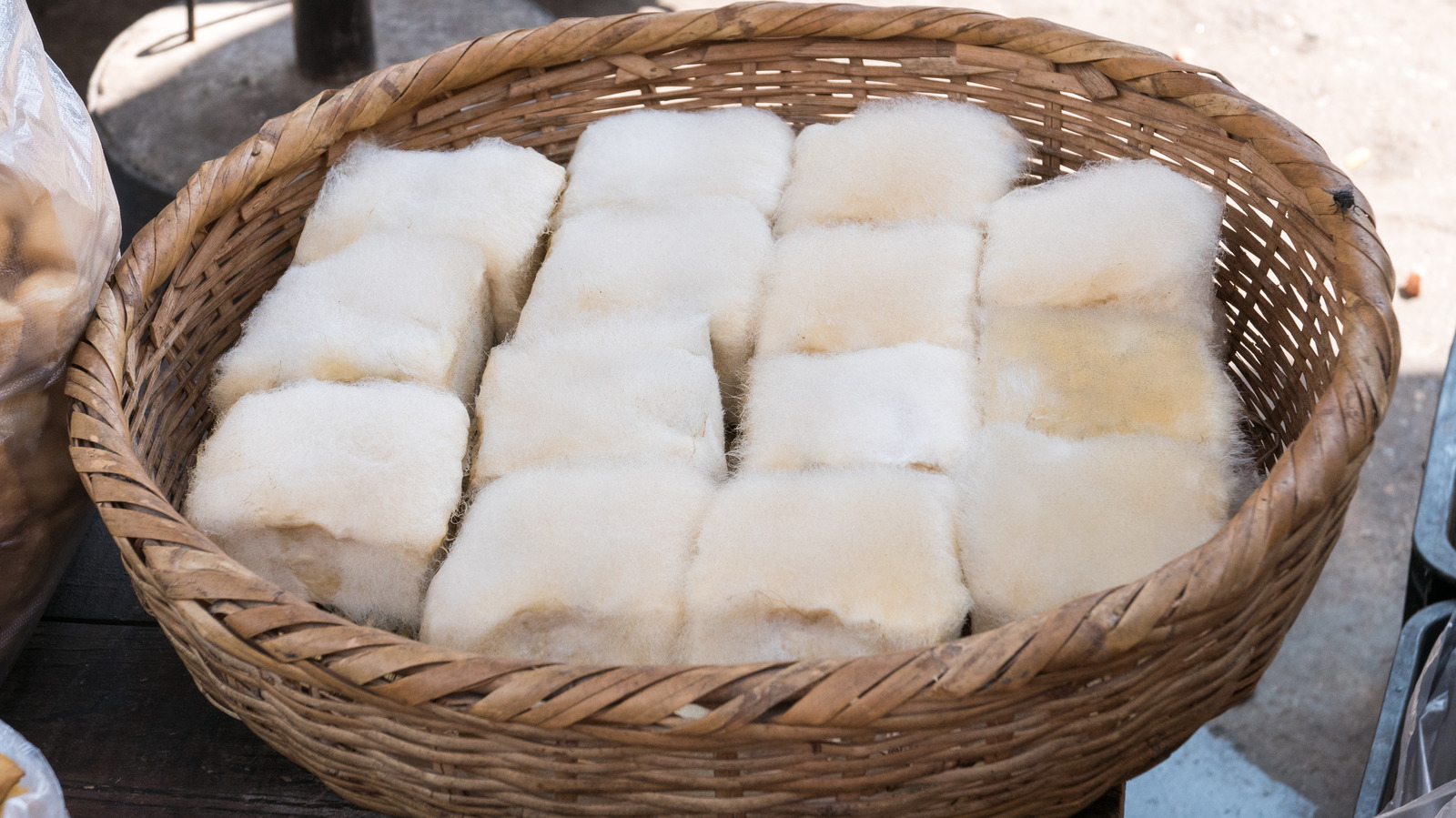Hairy tofu is exactly what it sounds like. Imagine bite-sized, rectangular pieces of bright white tofu covered in layers of what looks like very white Troll hair, or those faux sheepskin rugs you can find at IKEA. It's fuzzy, completely edible, and revered, especially in the eastern Chinese province Anhui, its place of origin.
Hairy tofu, or mao doufu, as it's called in China, begins just like any other type of tofu, with soybeans going through several processing stages before the formed bricks of tofu are set aside to ferment, at which time, that silky crown of fur begins to appear. Considered a delicacy, this unique type of tofu is dipped into a brine containing mucor powder (a fungal product which creates the hairy mold) and is then placed on straw or in wooden racks, which allows air to circulate around it. The tofu must be kept in an area that maintains a temperature of 60 to 75 degrees Fahrenheit for about a week, so that the mold can flourish.

At this point, the tofu is ready to be eaten or sold, and both locals and tourists flock to get their hands on some. How mao doufu is made Mao doufu has been produced in Anhui since the Han dynasty, or over 2,000 years ago. It's believed that the province's subtropical climate plays a key role in being able to produce such a different type of tofu.
There are several producers of hairy tofu in China, but many will tell you that the best come from those who make the dish by hand and not by modern machinery. Soybeans are first mashe.























